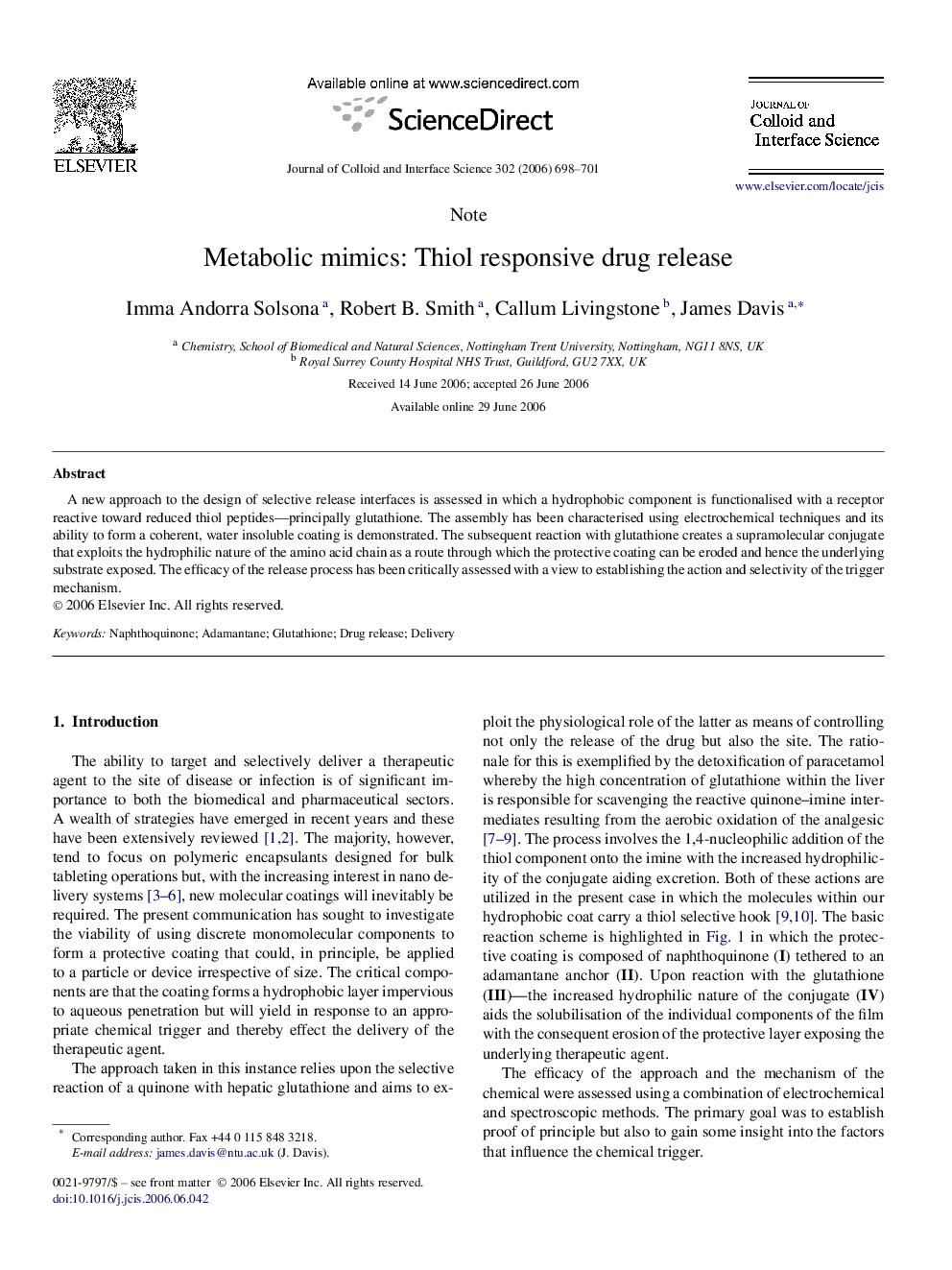| Article ID | Journal | Published Year | Pages | File Type |
|---|---|---|---|---|
| 612945 | Journal of Colloid and Interface Science | 2006 | 4 Pages |
Abstract
A new approach to the design of selective release interfaces is assessed in which a hydrophobic component is functionalised with a receptor reactive toward reduced thiol peptides-principally glutathione. The assembly has been characterised using electrochemical techniques and its ability to form a coherent, water insoluble coating is demonstrated. The subsequent reaction with glutathione creates a supramolecular conjugate that exploits the hydrophilic nature of the amino acid chain as a route through which the protective coating can be eroded and hence the underlying substrate exposed. The efficacy of the release process has been critically assessed with a view to establishing the action and selectivity of the trigger mechanism.
Related Topics
Physical Sciences and Engineering
Chemical Engineering
Colloid and Surface Chemistry
Authors
Imma Andorra Solsona, Robert B. Smith, Callum Livingstone, James Davis,
